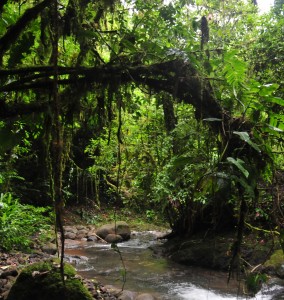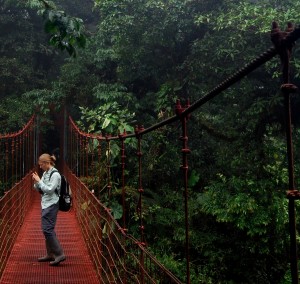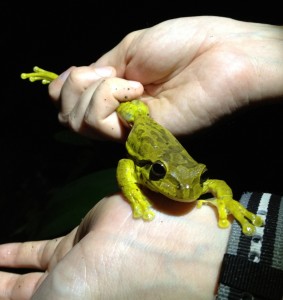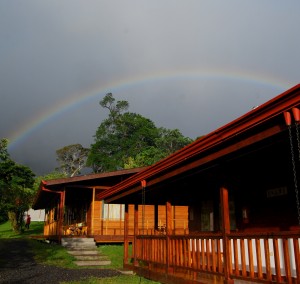Day 1: Travel from United States to Costa Rica
 The learning adventure begins! Today students will travel from Pittsburgh to Costa Rica. Everyone will enjoy a hearty “tico” welcome dinner as they get to know each other better. In the evening, the instructors will lead a discussion on cultural differences, etiquette, and rainforest safety.
The learning adventure begins! Today students will travel from Pittsburgh to Costa Rica. Everyone will enjoy a hearty “tico” welcome dinner as they get to know each other better. In the evening, the instructors will lead a discussion on cultural differences, etiquette, and rainforest safety. Day 2: Poás Volcano National Park
Day 3-6: Learn the Ropes at University of Georgia, Costa Rica
The campus of the University of Georgia, Costa Rica will become our exploration laboratory! We will meet in the classroom to learn the biological ins and outs of the ecosystems and incredible creatures in the forest surrounding us. Then, we take it to the field to see the textbooks in real life! We will solidify our learning with hands-on activities and by practicing research methods and techniques.Students will publish a blog post or record a podcast (doing the other at La Selva Biological Station) to improve their scientific communication skills. Our days will start with bird watching sessions and end with exciting night hikes or fun activities. We will also spend a day exploring the famous Monteverde Cloud Forest Reserve.

Classroom discussion and field activity topics include:
- Tropical Ecology Field Research Methods
- Setting Rainforest Plots, with a focus on avian and anuran sampling
- Amphibian Biology
- Reptilian Biology and Ecology
- Bird Biology and Ecology
Practiced field research methods include:
- Quadrats
- Cover Boards
- Audio Strip Transects
- Acoustic Monitoring
- Visual Encounter Surveys (VES)
- Identifying birds in the field
- Keeping a field notebook
- Point counts
- Behavioral observation
- Spot mapping
- Audio recording
- Media collection
- Species checklists
Day 7-13: Field Research at La Selva Biological Reserve

After a scenic drive through the lush green mountains of Braulio Carrillo National Park, we arrive at the internationally renowned La Selva Biological Station. We will hike through the rainforest of La Selva, spotting sloths, poison dart frogs, iguanas, and howler monkeys. Instructors will mentor each team of students in their research project design. Over the next few days, students will work side-by-side with fellow classmates and instructors to carry out the scientific method from start to finish on their designed project. Teams will conduct their experiments, analyze their data, and draw conclusions. They will work together to draft an abstract, methods, and results, section of their research paper and individually write the introduction, discussion, and references. Each team will then present their project findings to the rest of the group on the final morning.
During half day workshops (while research project subjects are inactive), students will participate in the Climate Change Legacy Dataset program in the arboretum and meteorological towers at La Selva. These workshops will be led by the Director of La Selva Biological Station; Carlos de la Rosa, Ph.D. Students will be active members of the first long-term student generated climate change dataset. Students will learn:
•How to collect and analyze tree growth data including Taxonomy/identification, Growth (Diameter at Breast Height or DBH) and exact georeferenced location.
•How to collect and analyze climate data
•How to interpret tree growth data and climate data
•What are Long Term Datasets and why they are important.
Students will examine their data along with the climate/weather data archive of La Selva to determine how tree growth is related to climate changes over long periods and from year to year. Students will then make projections about future climate change and its effects on tropical ecosystems.
On the final day, we will take a chocolate tour at the Tirimbina cacao plantation as a sweet reward for everyone’s hard work. Taste your way through the history of chocolate, sampling cacao in its various forms while learning about its use as both a currency and delicacy.
Day 14: Travel from Costa Rica to the United States
 Today we must sadly say “Adios!” and journey home. The plane ride is an excellent time to reflect on all that you experienced and learned during your time in this amazing country. Pura vida!
Today we must sadly say “Adios!” and journey home. The plane ride is an excellent time to reflect on all that you experienced and learned during your time in this amazing country. Pura vida!







